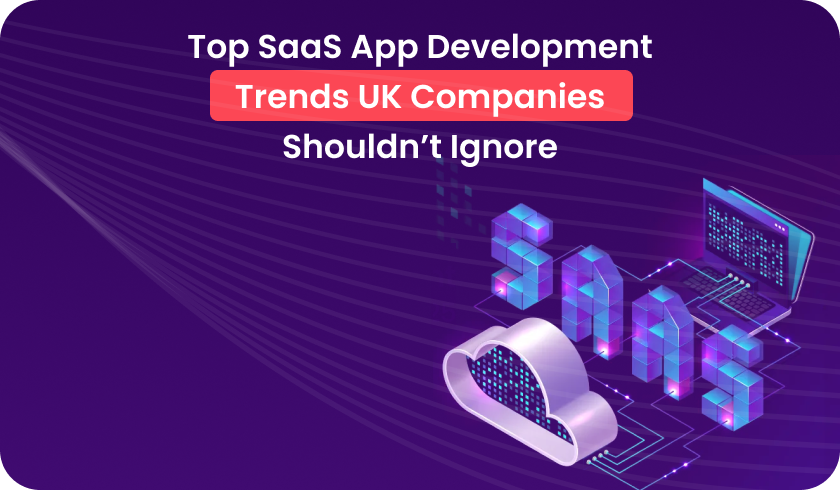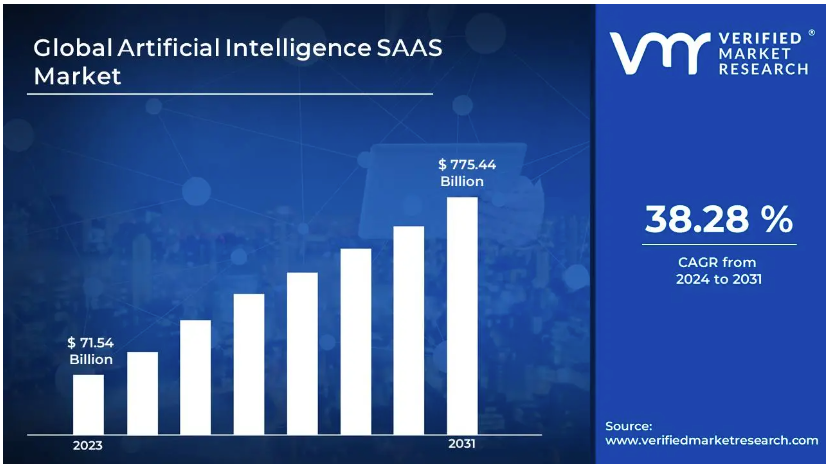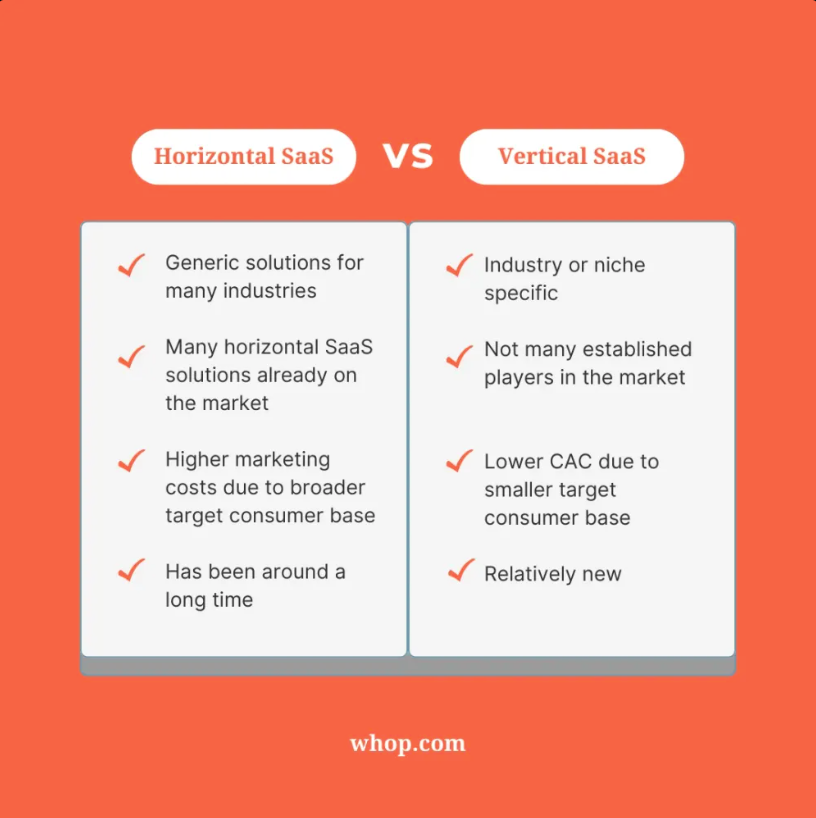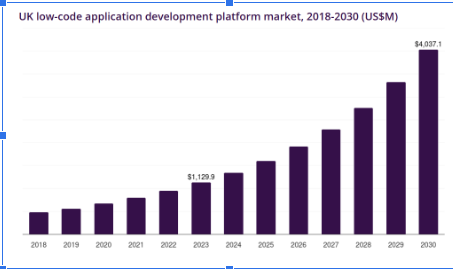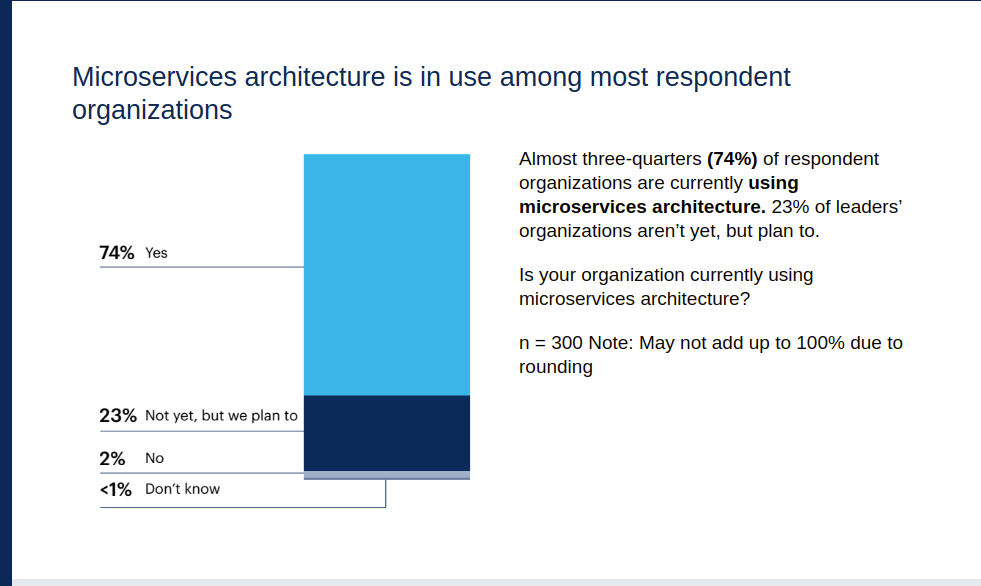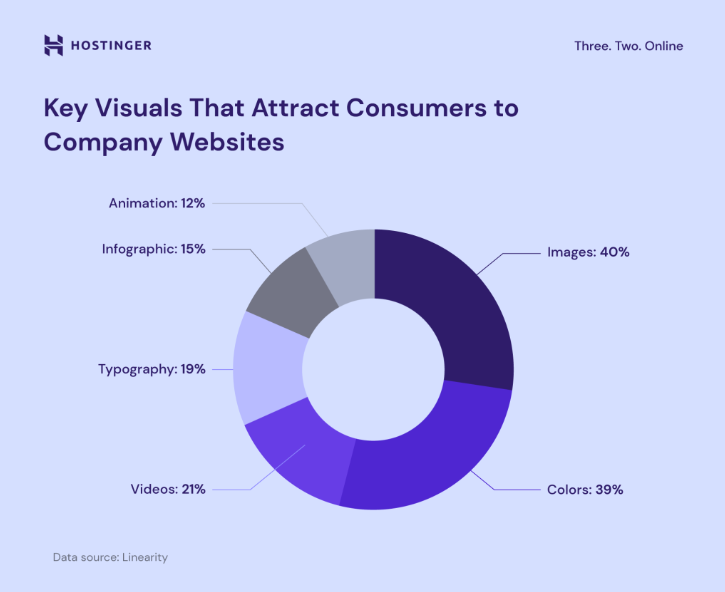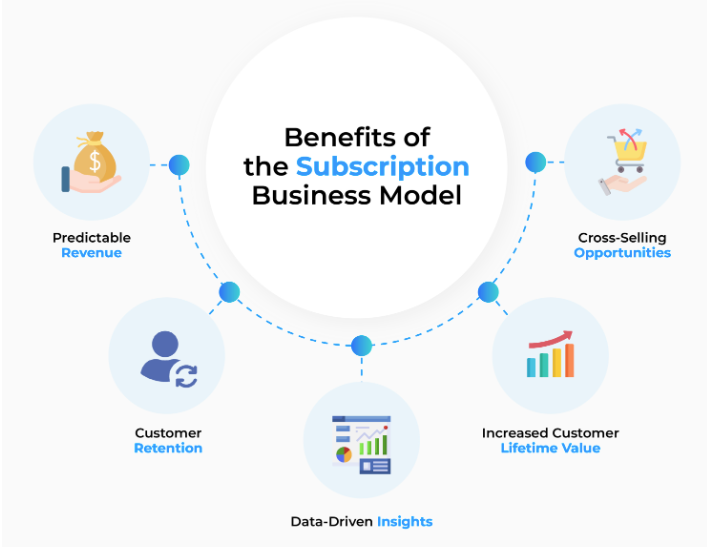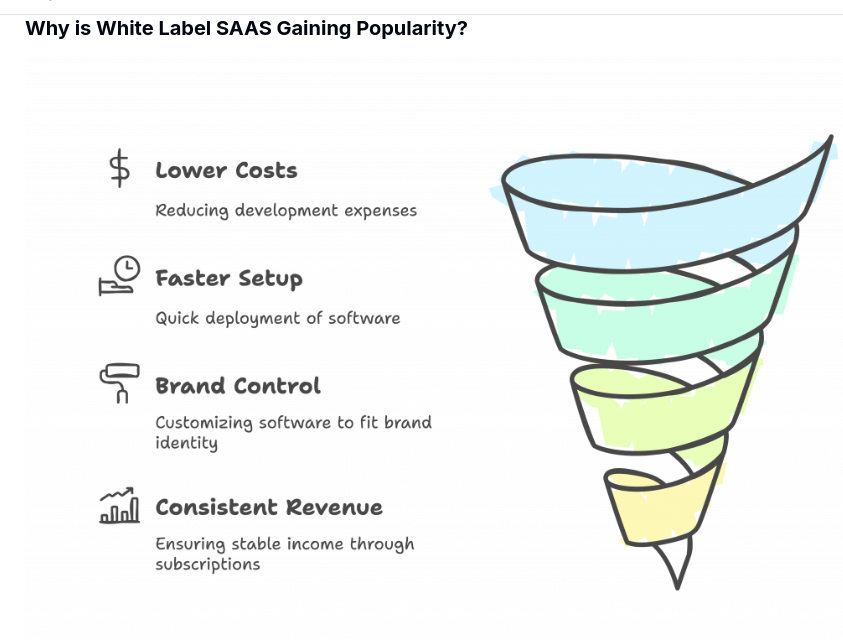Quick Summary
Keeping up with the new trends in SaaS application development is extremely important. And UK-based companies are quite literally following it. From AI integration, microservices architecture, low-code/no-code platforms, to sustainable development, these trends are rapidly transforming the UK SaaS development market. Thus, partnering with a SaaS software development company that is updated with the latest trends can help UK businesses to explore new possibilities in fulfilling user expectations while staying at the competitive front.
Introduction
The SaaS market isn’t just growing anymore; it is exploding. From startups to well-established enterprises, companies in the UK are adopting cloud-based solutions more and more for flexibility, scalability, and cost-effectiveness. But here comes the real kicker: the global SaaS market is estimated to hit $282 billion by 2028 (source: Statista). Well, that’s huge! But the question is, which trends to embrace for a SaaS software development company to stay ahead of this curve? Let’s find out.
1. How AI Integration is Revolutionizing SaaS Application Development
The global artificial intelligence SaaS market is expected to reach $775.44 million by 2031.
AI-powered SaaS solutions are the new norm in software development. Which was considered an add-on, today is a must-have for a business to survive. From automating workflows, AI chatbots and assistants, predictive logics, to personalization in real-time, AI is simplifying every aspect of SaaS application development.
For example, businesses today are engaging with SaaS application development services UK or partnering with a SaaS software development company to build AI-based CRM solutions to streamline customer interactions and analyze data. Similarly, companies are integrating AI with HR solutions to simplify employee recruitment and management processes.
2. Why Vertical SaaS is the Future of SaaS Application Development?
A horizontal SaaS solution caters to a broad range of industries and offers generic features; on the other hand, a vertical SaaS solution caters to specific industries such as healthcare, finance, education, sales, etc, and offers niche features according to their business requirements.
 Industry-Specific Customisation: Vertical SaaS focuses on one line of business and provides a customised workflow that addresses the industry-specific challenges.
Industry-Specific Customisation: Vertical SaaS focuses on one line of business and provides a customised workflow that addresses the industry-specific challenges.  Compliance-Driven Development: Compliance regulations are embedded into their development to a certain degree (like GDPR, HIPAA) so that users are at less risk of being non-compliant.
Compliance-Driven Development: Compliance regulations are embedded into their development to a certain degree (like GDPR, HIPAA) so that users are at less risk of being non-compliant.  More ROI to Businesses: Vertical SaaS solves a specialised pain point, which ensures faster adoption and better efficiency.
More ROI to Businesses: Vertical SaaS solves a specialised pain point, which ensures faster adoption and better efficiency. Deeper Data Insight: Vertical analytics will get more actionable insights than generic SaaS tools.
Deeper Data Insight: Vertical analytics will get more actionable insights than generic SaaS tools. Scalability within the Niche: Vertical SaaS evolves with trends in the industry, thus making it more resilient for the future than the horizontal SaaS model.
Scalability within the Niche: Vertical SaaS evolves with trends in the industry, thus making it more resilient for the future than the horizontal SaaS model.
3. Top Security Practices for SaaS Application Development Companies
Security continues to keep itself as the backbone of SaaS application development services in the UK, especially in multi-tenant environments. Even the web design and development services UK adhere to the strict compliance and security guidelines to protect user data and maintain privacy regulations.
Here are some top reasons for security breaches in software applications:
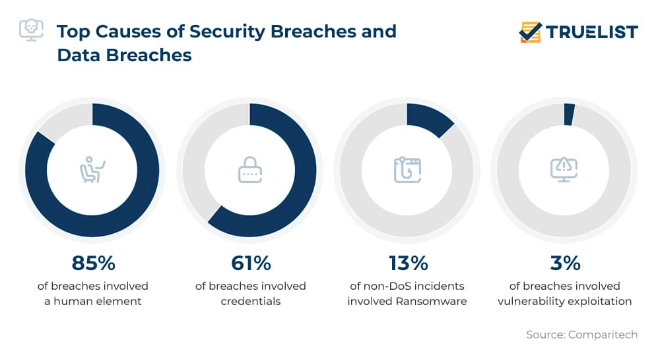 So, which top security features must be included during SaaS software development in UK?
So, which top security features must be included during SaaS software development in UK?
 Encryption of Data at Rest and in Transit: AES-256 and TLS protect sensitive information from breaches.
Encryption of Data at Rest and in Transit: AES-256 and TLS protect sensitive information from breaches. Zero Trust Architecture: Continual authentication minimises unauthorised access.
Zero Trust Architecture: Continual authentication minimises unauthorised access. Regular Penetration Testing: Regular pen tests can help software companies assess the system’s response mechanism and capacity to handle cyberattacks.
Regular Penetration Testing: Regular pen tests can help software companies assess the system’s response mechanism and capacity to handle cyberattacks. Role-based Access Control (RBAC): Data visibility restrictions ensure that only the desired and required information is visible to the right employee. This ensures that your data remains inaccessible to unknown access.
Role-based Access Control (RBAC): Data visibility restrictions ensure that only the desired and required information is visible to the right employee. This ensures that your data remains inaccessible to unknown access. Compliance Certification: Being ISO 27001 certified, SOC 2, and GDPR-compliant adds credibility to the certification and decreases legal risks.
Compliance Certification: Being ISO 27001 certified, SOC 2, and GDPR-compliant adds credibility to the certification and decreases legal risks.
4. How Low-Code/No-Code Platforms Are Changing SaaS Development in the UK?
The low-code application development market in the UK is expected to reach $4037.1 million by 2031.
Launching an MVP or the first software prototype has become simplified with low-code/no-code platforms. Such platforms use built-in integrations and drag-and-drop tools to develop solutions and launch quickly for user testing and feedback. In short, the Low-code/no-code tools are fast-tracking SaaS development cycles throughout companies in the UK.
 Rapid Prototyping: Companies create a prototype for MVP in minutes without heavy dependency on coding.
Rapid Prototyping: Companies create a prototype for MVP in minutes without heavy dependency on coding. Reduced Development Cost: No need to hire a large team of engineers, thus lowering operational costs.
Reduced Development Cost: No need to hire a large team of engineers, thus lowering operational costs. Enhanced Business Agility: Streamlining the process for non-technical people to create workflows reduces costly constraints.
Enhanced Business Agility: Streamlining the process for non-technical people to create workflows reduces costly constraints. Integration Capabilities: Most platforms are laden with pre-set API options for swift third-party contract integration.
Integration Capabilities: Most platforms are laden with pre-set API options for swift third-party contract integration. Democratizing Innovation: Enables SMEs in the UK to launch SaaS applications without having to pour in heavy investments.
Democratizing Innovation: Enables SMEs in the UK to launch SaaS applications without having to pour in heavy investments.
5. The Role of Microservices Architecture in Modern SaaS Application Development
According to the Gartner peer community, around 74% of organizations are implementing microservices architecture:
Most UK businesses are stepping away from developing a monolithic app with a large single codebase for all services. They are rapidly investing in microservices that break down a large application into individual and independent modular components, each offering a unique application service.
 Decoupled Services: Independent modules are easier to update without requiring the whole application to be altered.
Decoupled Services: Independent modules are easier to update without requiring the whole application to be altered. Scalable Infrastructure: Organisations could freely scale with the only service they need, which eventually optimises resource use.
Scalable Infrastructure: Organisations could freely scale with the only service they need, which eventually optimises resource use. Better Fault Tolerance: Due to the isolation between each service, a failure in one cannot crash the system.
Better Fault Tolerance: Due to the isolation between each service, a failure in one cannot crash the system. Faster Deployment Cycles: Integration of the CI/CD pipeline with microservices permits rapid releases.
Faster Deployment Cycles: Integration of the CI/CD pipeline with microservices permits rapid releases. Tech Flexibility: Every service can employ the most suitable tech stack for its function.
Tech Flexibility: Every service can employ the most suitable tech stack for its function.
6. Web Design and Development Services UK: How They Complement SaaS Application Development
A website for a SaaS application comprises multiple attributes such as images, animations, graphics, content, navigation, and layouts. In addition to these visible elements, several other operation features, like website responsiveness, performance, and relevance to the brand, play a significant role in attracting and engaging visitors on the website. According to a Hostinger survey, 40% of the customers are attracted to the company’s websites through images.
Thus, web design and development services UK must focus on the following elements to complement SaaS application development:
 Design elements: Visuals, images, animations, graphics, typography, content, and other visible elements all add up to making an engaging website for a SaaS application.
Design elements: Visuals, images, animations, graphics, typography, content, and other visible elements all add up to making an engaging website for a SaaS application. User-Centric Interface: A clean, intuitive interface that improves customer onboarding as well as continuous engagement.
User-Centric Interface: A clean, intuitive interface that improves customer onboarding as well as continuous engagement. Responsive Layouts: Make sure that SaaS apps work fluidly across various devices such as smartphones, tablets, and desktops.
Responsive Layouts: Make sure that SaaS apps work fluidly across various devices such as smartphones, tablets, and desktops. Accessibility guidelines: A WCAG-compliant design implies extended user inclusivity.
Accessibility guidelines: A WCAG-compliant design implies extended user inclusivity. Performance Improvement: Web design teams work on minimizing the load time of websites to maintain SaaS efficiency.
Performance Improvement: Web design teams work on minimizing the load time of websites to maintain SaaS efficiency. Brand Consistency: A UI/UX that aligns with the brand’s vision and ideologies can complement its SaaS product and add credibility in the competitive markets of the United Kingdom.
Brand Consistency: A UI/UX that aligns with the brand’s vision and ideologies can complement its SaaS product and add credibility in the competitive markets of the United Kingdom.
7. Flexible Subscription Models: Driving Growth for SaaS Companies
A one-time purchase of a SaaS application might not be beneficial for the company in terms of generating consistent revenue. As well as for the customer, making a substantial upfront investment in one go might be difficult. Flexible subscription-based models for SaaS solutions have emerged as the perfect solution for both the company and the customer. They offer several benefits, including predictable or fixed revenue, data-driven insights, enhanced cross-selling opportunities, and increased customer life-time value and retention.
Today, most UK-based SaaS companies offer flexible subscription models such as:
 Tiered Pricing Structure: Different plans cater to all sizes of businesses.
Tiered Pricing Structure: Different plans cater to all sizes of businesses. Freemium Conversion: A free trial becomes a paid subscription based on providing value.
Freemium Conversion: A free trial becomes a paid subscription based on providing value. Usage-Based Billing: It allows costs to be proportional to customer usage, thereby reducing the chances of churn.
Usage-Based Billing: It allows costs to be proportional to customer usage, thereby reducing the chances of churn. Enterprise Licensing: Customised contracts are developed for long-term, high-value clients.
Enterprise Licensing: Customised contracts are developed for long-term, high-value clients. Dynamic Upgrades: Users may augment their features along with the growth of their businesses.
Dynamic Upgrades: Users may augment their features along with the growth of their businesses.
8. Developing White-Label SaaS Products: Opportunities for UK SaaS Companies
A ready-to-brand software that can be customized, rebranded, and tailored to resold to different companies is called a white-label SaaS product. UK markets are fast developing, and businesses need quick and ready-to-brand solutions to enter local and global markets. A while-label SaaS product can be a true saviour for businesses that just want a SaaS solution that can be rebranded for fast time-to-market, thus fulfilling the instant demands of the customers or industry requirements.
 Minimum development cost and time: Using a ready-to-brand solution allows businesses just to customize, rebrand, and launch in the market. Thus saving development cost and time.
Minimum development cost and time: Using a ready-to-brand solution allows businesses just to customize, rebrand, and launch in the market. Thus saving development cost and time. Enhanced scalability: Businesses can easily scale with teh ready-made solutions without making significant investments.
Enhanced scalability: Businesses can easily scale with teh ready-made solutions without making significant investments. Source of recurring revenue: White-label SaaS product development companies can introduce subscription-based models for these solutions, and thus generate recurring revenue on a monthly/annual basis.
Source of recurring revenue: White-label SaaS product development companies can introduce subscription-based models for these solutions, and thus generate recurring revenue on a monthly/annual basis.
9. Sustainable SaaS Development: How UK Companies Can Build Eco-Friendly Applications
Sustainability stakes have reached new heights for UK companies. The majority of businesses are adopting green practices while building SaaS applications, such as:
 Renewable energy sources: using renewable sources of energy, such as solar power or wind power, at the SaaS application development centers.
Renewable energy sources: using renewable sources of energy, such as solar power or wind power, at the SaaS application development centers. Cloud infrastructure: Partnering with top cloud providers like Microsoft Azure, AWS, etc, for energy optimization.
Cloud infrastructure: Partnering with top cloud providers like Microsoft Azure, AWS, etc, for energy optimization. Monitoring carbon footprints: Businesses are adopting a regular practice of monitoring the carbon emissions associated with their infrastructure.
Monitoring carbon footprints: Businesses are adopting a regular practice of monitoring the carbon emissions associated with their infrastructure.
Conclusion: Why Collaboration SaaS Is a Key Growth Opportunity for UK Developers
Collaboration SaaS is shaping the future of productivity by ways of addressing the demands of a newer set of businesses. Remote workforce enablement by these tools allows organisations to put together an amicable work-from-anywhere culture while ensuring teams remain connected from wherever they are.
Real-time communications such as video conferencing, chatting, and file-sharing, secure from the client end, ensure maximum efficiency and minimum workflow bottlenecks. Going past communication, the project management aspects of the application guarantee that collaboration is linked with task execution: implementation drives accountability and productivity.
Cross-platform accessibility also means that users can work smoothly between desktop, mobile, and web-based applications. As hybrid working models gain wider acceptance, the need for collaboration SaaS picks up speed. This makes collaboration SaaS a lucrative option for UK developers to explore, innovate, and seize long-term market opportunities.
Looking to build a powerful SaaS application for your UK business? Partner with Rainstream Technologies today!
FAQs:
 What are the different flexible subscription models offered by SaaS application development companies in the UK?
What are the different flexible subscription models offered by SaaS application development companies in the UK?
Tiered pricing, freemium, flat-rate pricing, and usage-based pricing are some of the top subscription-based SaaS models offered by UK companies.
 What is a white-label SaaS product?
What is a white-label SaaS product?
A white-label SaaS product is a read-to-brand solution developed by the SaaS companies that can be customized, rebranded, and resold to other companies.
 What sustainability practices do UK businesses adopt?
What sustainability practices do UK businesses adopt?
Using energy-efficient models, adopting renewable sources of energy for use, and monitoring carbon footprints are some of the important sustainability practices adopted by UK companies.
